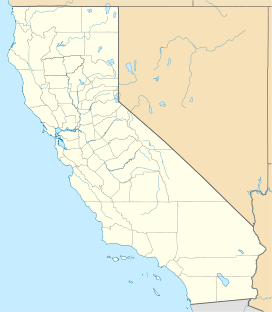Mountain Lake Park
| Mountain Lake Park | |
|---|---|

Mountain Lake at Mountain Lake Park
|
|
| Type | Municipal (San Francisco) |
| Location | 9th and Lake Streets, San Francisco |
| Coordinates | 37°47′12.97″N 122°28′4.75″W / 37.7869361°N 122.4679861°WCoordinates: 37°47′12.97″N 122°28′4.75″W / 37.7869361°N 122.4679861°W |
| Area | 14 acres (5.7 ha) |
| Created | 1875 |
| Status | Open all year |
Mountain Lake Park is a 14-acre (5.7 ha) San Francisco park in the Richmond District neighborhood, located north of the intersection of Lake and Funston. It was designed by engineer William Hammond Hall in the late 19th century, circa 1875. Hall also designed Golden Gate Park and was significantly influenced by Frederick Law Olmsted.
Spanish explorer Juan Bautista de Anza ended his second northward expedition at the lake, stopping for two days in 1776. While here he located a site for the Spanish presidio that was later built. A plaque was placed in September 1957 near the point where he stayed.
Fill taken from the cut to build the MacArthur Tunnel was dumped near Mountain Lake during the construction of the Funston Avenue approach to the Golden Gate Bridge in 1939. The fill was used to compress marshy lands but also reduced the size of the lake. The US Army imposed conditions on the approval of construction permits through the Presidio, including requiring the drainage of runoff from the Funston Avenue approach into Mountain Lake, rather than onto Presidio lands.
Mountain Lake is a 4-acre (1.6 ha) body of water east of State Route 1 (Park Presidio Boulevard). The lake is at the southern tip of the Presidio of San Francisco and just south of the Presidio Golf Course. It is one of the last natural lakes in San Francisco and the only natural lake in the Golden Gate National Recreation Area.
In 1897, water from the lake was used to irrigate the newly-built golf course at the Presidio, dropping the water level from its original 30-foot (9.1 m) depth. Park Presidio Boulevard was constructed for the Funston approach directly over the western shore of the lake, which reduced the size of the lake as well. Since runoff from the Funston approach was directed into the lake, golf course pesticides and lead emissions from cars burning leaded gasoline were dumped into the lake over many years. The lake also became a dumping ground for unwanted pets, including crawdads, large-mouth bass, goldfish, carp, bullfrogs, turtles, and even an alligator, which was discovered and removed in 1996.
...
Wikipedia



